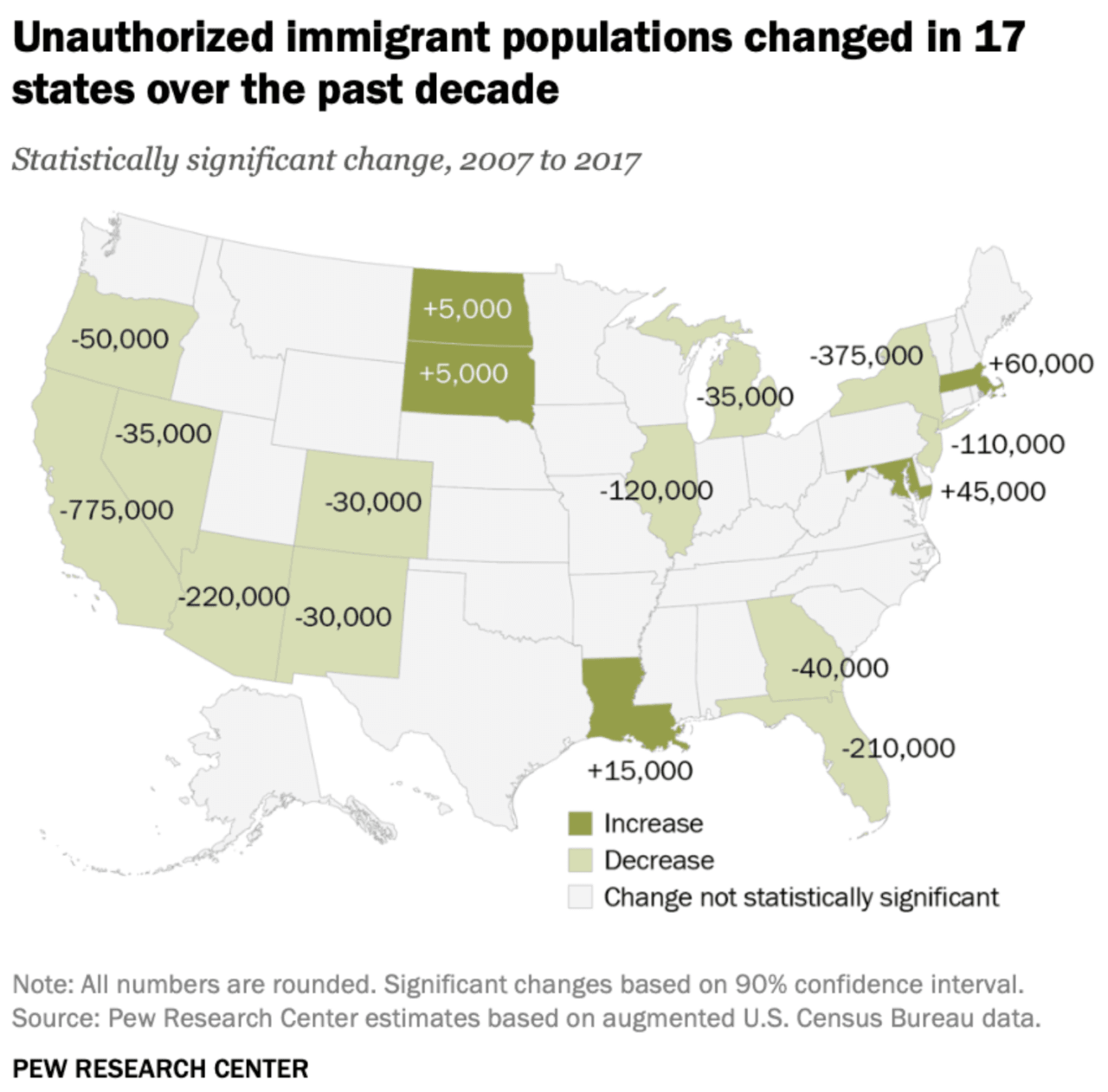The illegal alien population has boomed in at least three red states won by President Donald Trump in the 2016 presidential election, new analysis reveals.
Pew Research Center analysis finds that in Louisiana, North Dakota, and South Dakota — three states that went overwhelmingly for Trump over failed Democrat candidate Hillary Clinton in the 2016 election — the illegal alien population has increased over the last ten years.
Between 2007 and 2017, Louisiana — which went nearly 60 percent for Trump in the 2016 election — has an illegal alien population that has grown by 15,000.
In North Dakota, where Trump won with 63 percent of the vote, the illegal alien population has grown by 5,000 over the last decade. This is a sizeable increase for the state that has one of the smallest resident populations in the country with just 760,000 residents.
For South Dakota, a state that voted 61.5 percent for Trump, the illegal alien population has also grown by 5,000 over the past ten years. This, too, is a significant increase as the state only has a resident population of about 883,000 residents.
The illegal alien population — with an estimated 11 to 22 million illegal aliens living across the U.S. — has grown in the Democrat-controlled states of Massachusetts and Maryland. In Massachusetts, there are 60,000 more illegal aliens than there were ten years ago. In Maryland, the illegal alien population has grown by 45,000 since 2007.
Increases in illegal alien populations across red states have electoral consequences where American voters’ votes are diluted in elections due to counting illegal aliens in congressional apportionment.
As Breitbart News has reported, the counting of only American citizens to divide up congressional districts and electoral college votes would shift power away from the affluent, metropolitan coastal cities of the U.S. with large illegal alien populations and towards middle America with low illegal alien populations.
If congressional districts were set by the number of citizens, the overall average population needed per congressional seat could decrease to about 670,000 citizens per district. This would give a stronger advantage for states with small illegal alien populations to gain and keep their current number of congressional seats.
Currently, because illegal aliens are counted in congressional districting, red states like Alabama and West Virginia are set to lose congressional seats and thus federal representation due to low illegal alien populations, while states like California are set to retain their growing congressional representation thanks to their enormous 5.3 million illegal alien and noncitizen populations.
The U.S. admits more than 1.5 million legal and illegal immigrants every year, with more than 70 percent coming to the country through the process known as “chain migration,” whereby newly naturalized citizens can bring an unlimited number of foreign relatives to the U.S. In the next 20 years, the current U.S. legal immigration system is on track to import roughly 15 million new foreign-born voters. Between seven and eight million of those foreign-born voters will arrive in the U.S. through chain migration.
John Binder is a reporter for Breitbart News. Follow him on Twitter at @JxhnBinder.


COMMENTS
Please let us know if you're having issues with commenting.